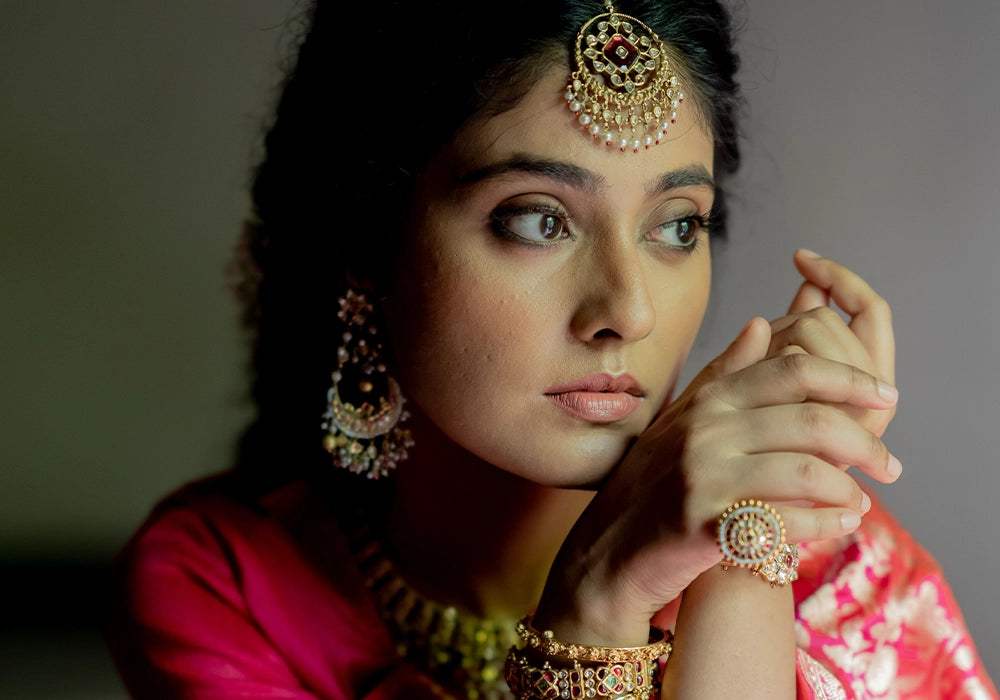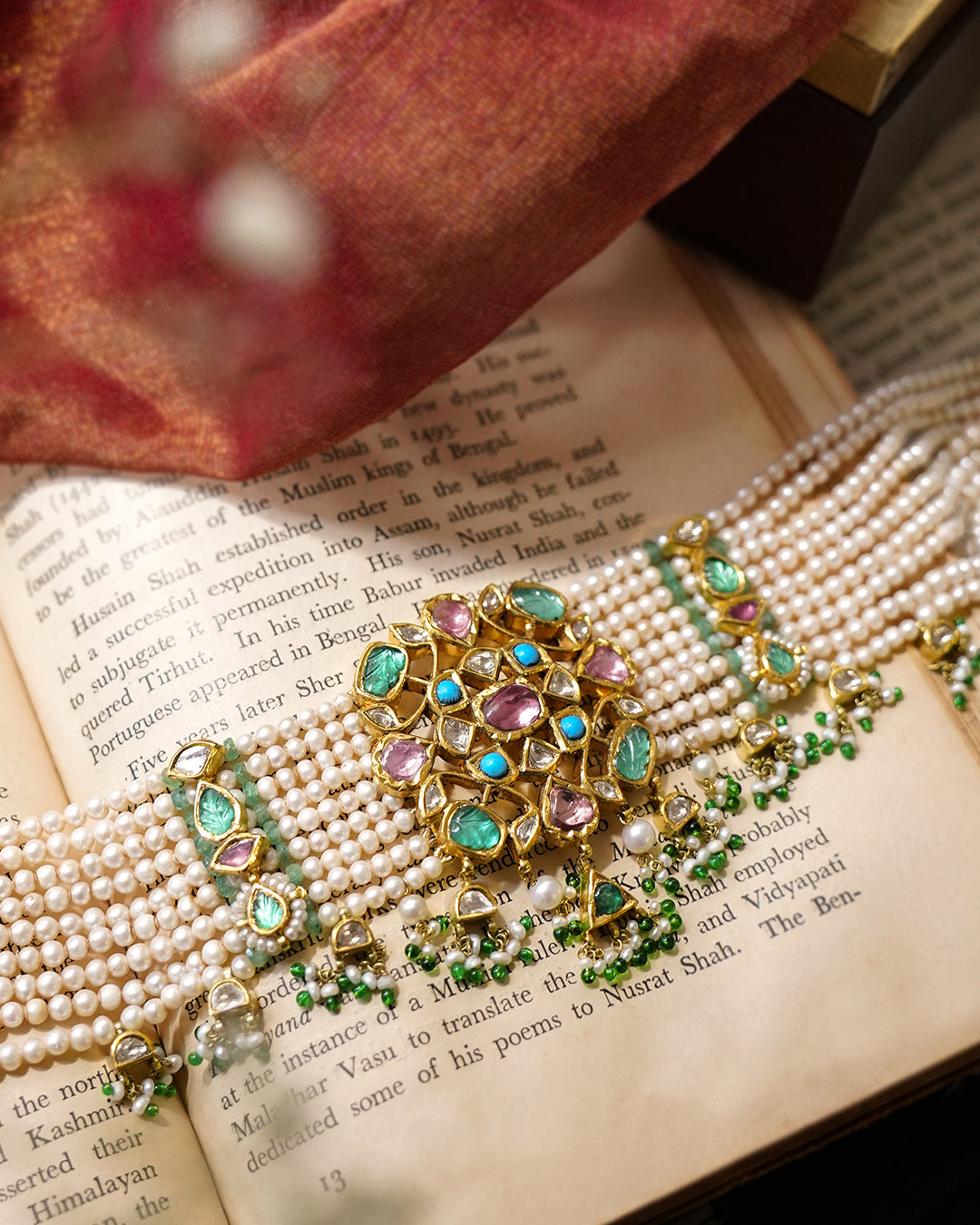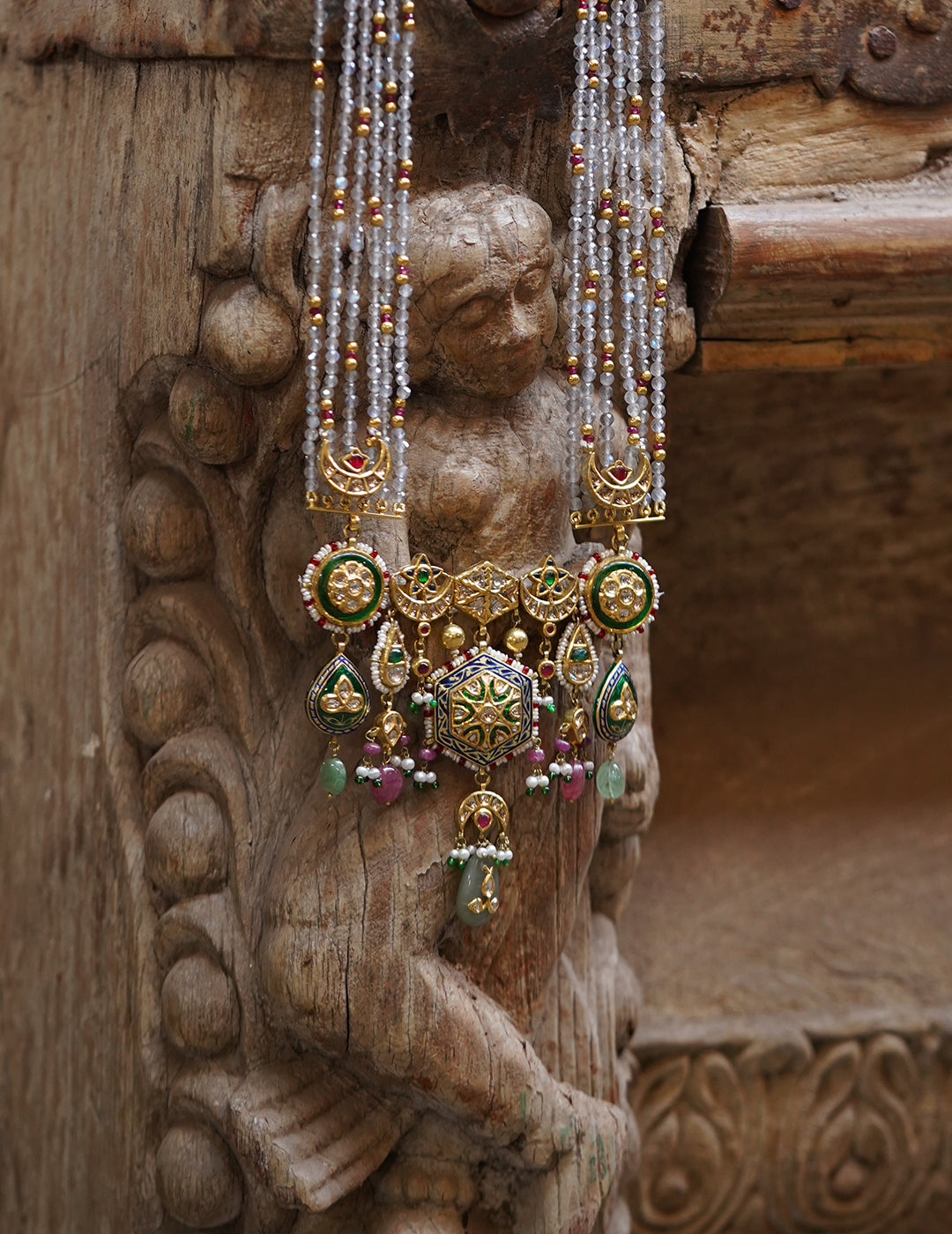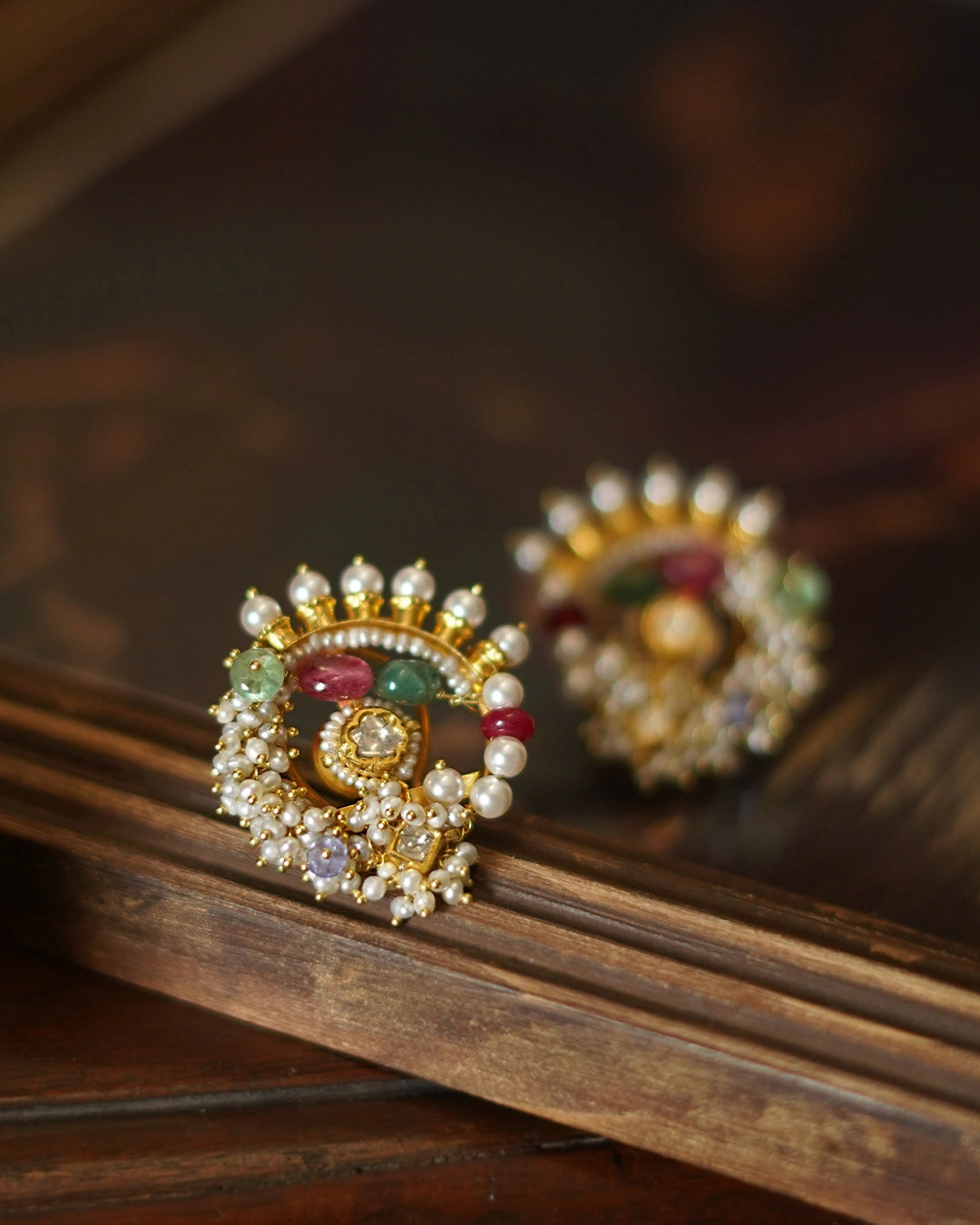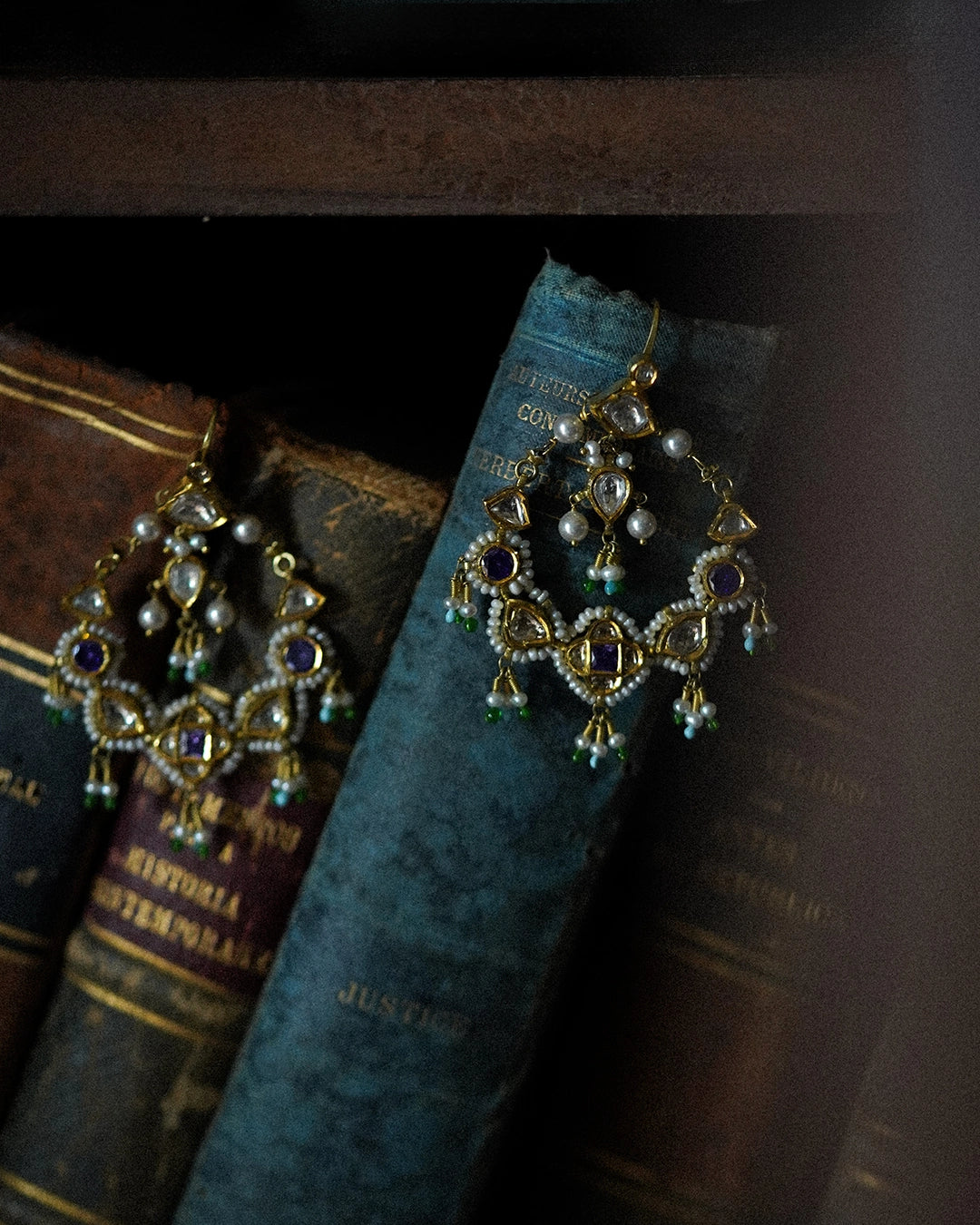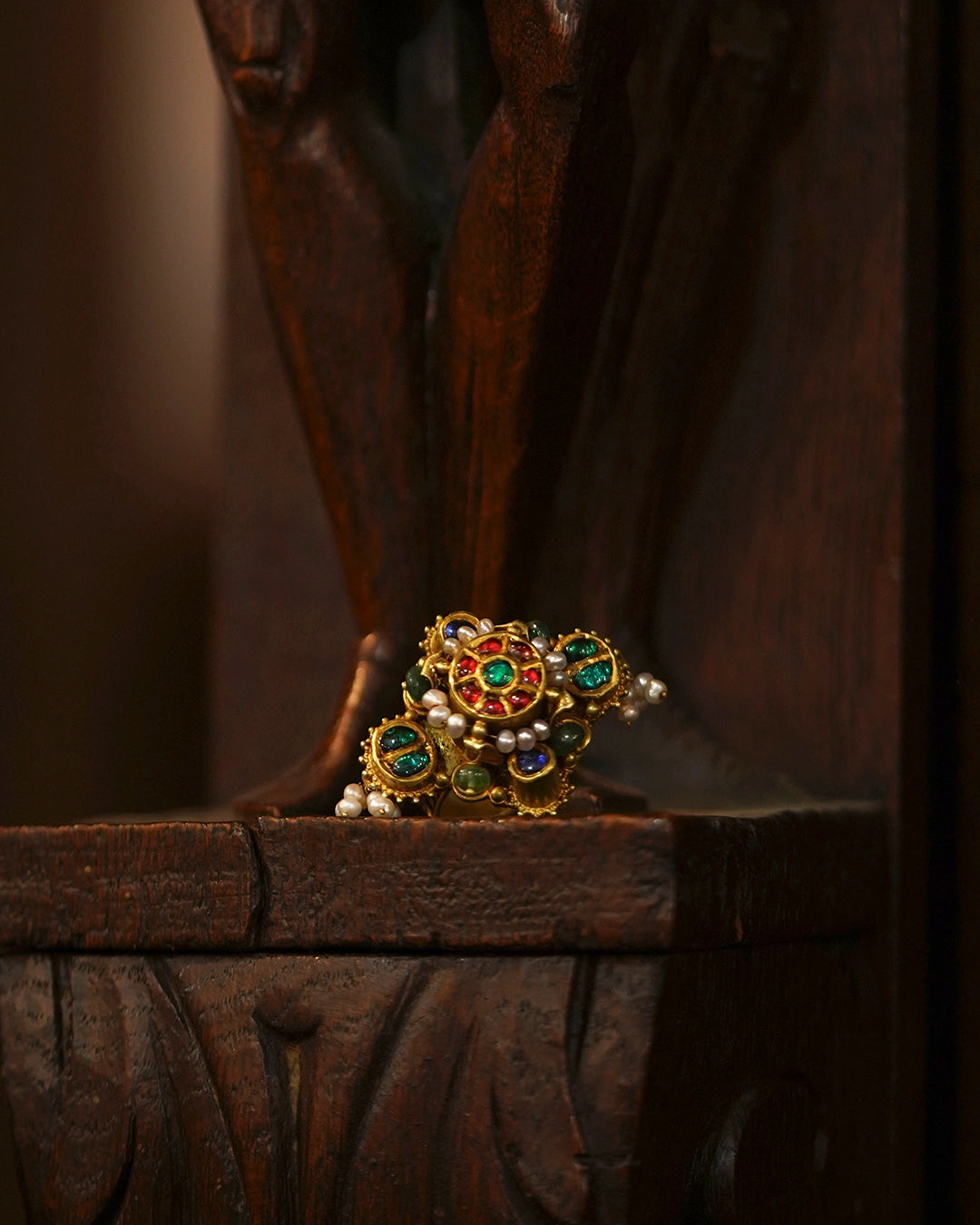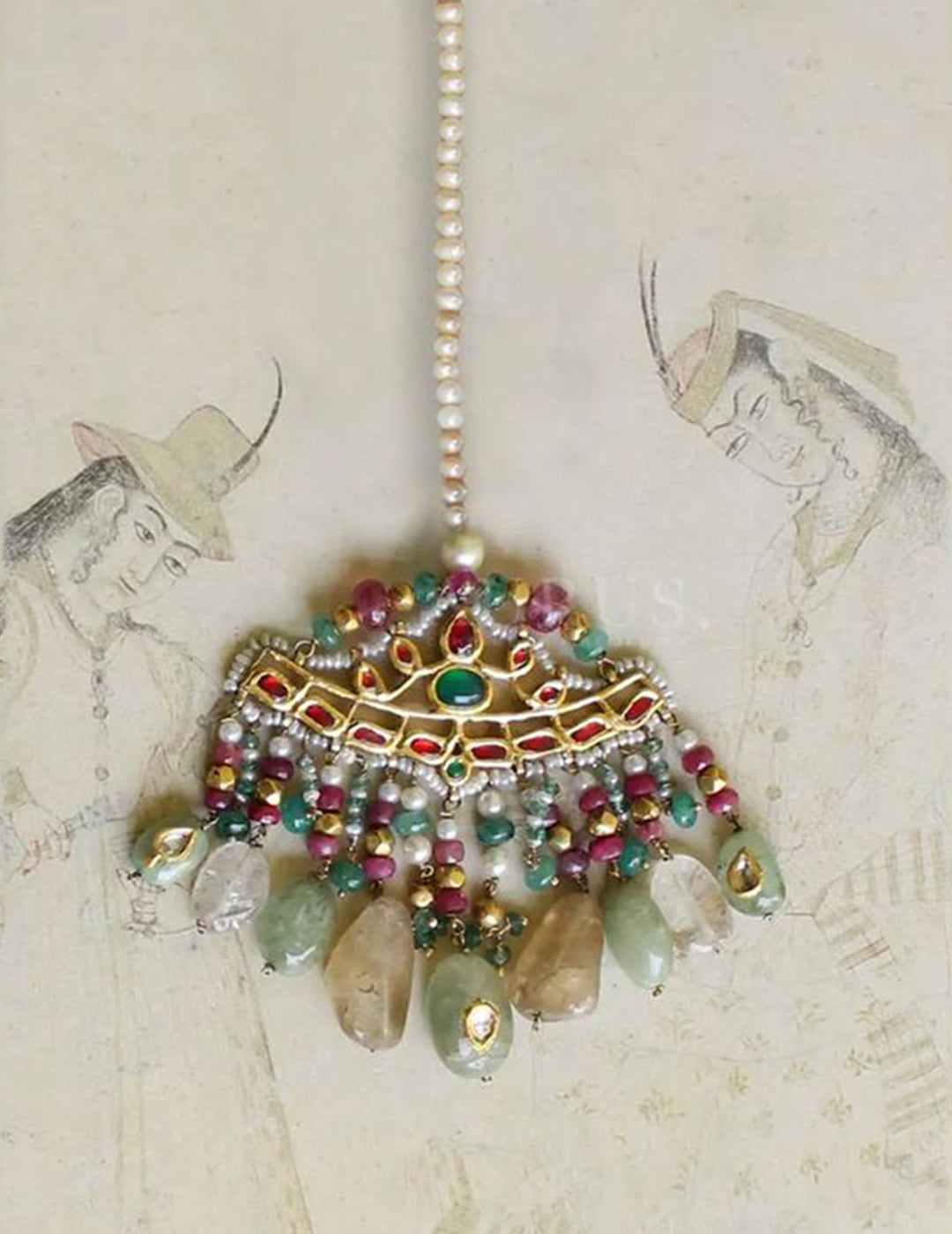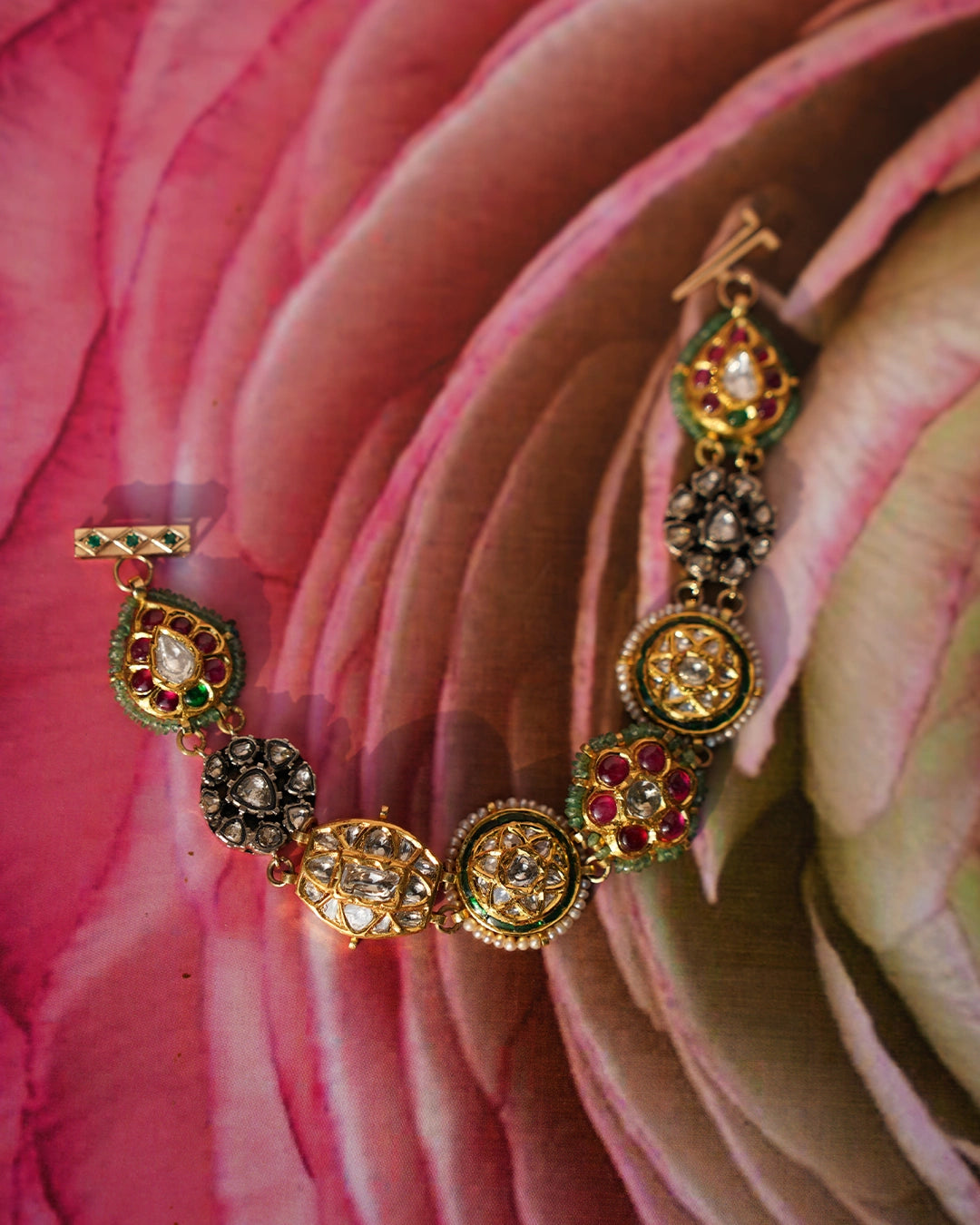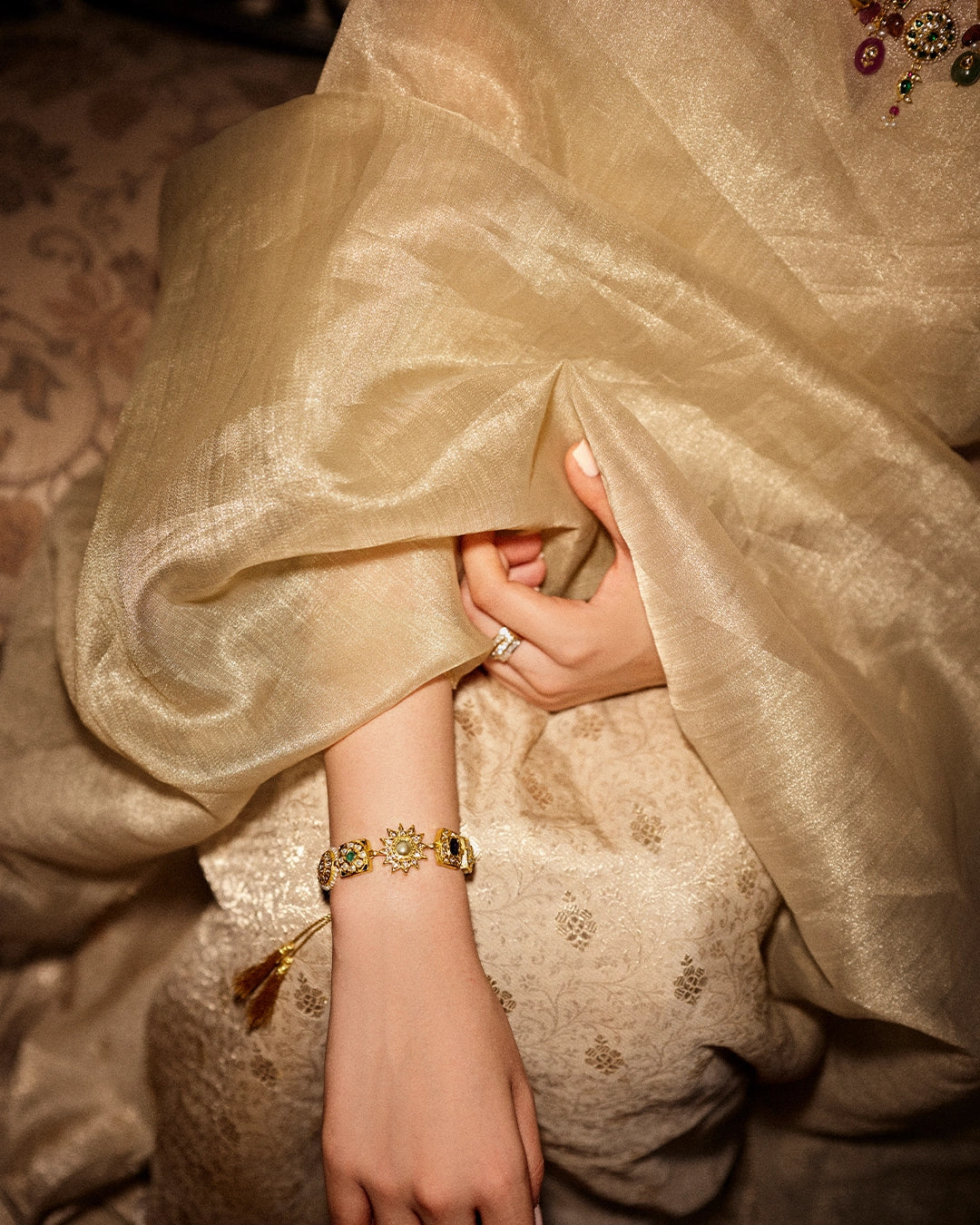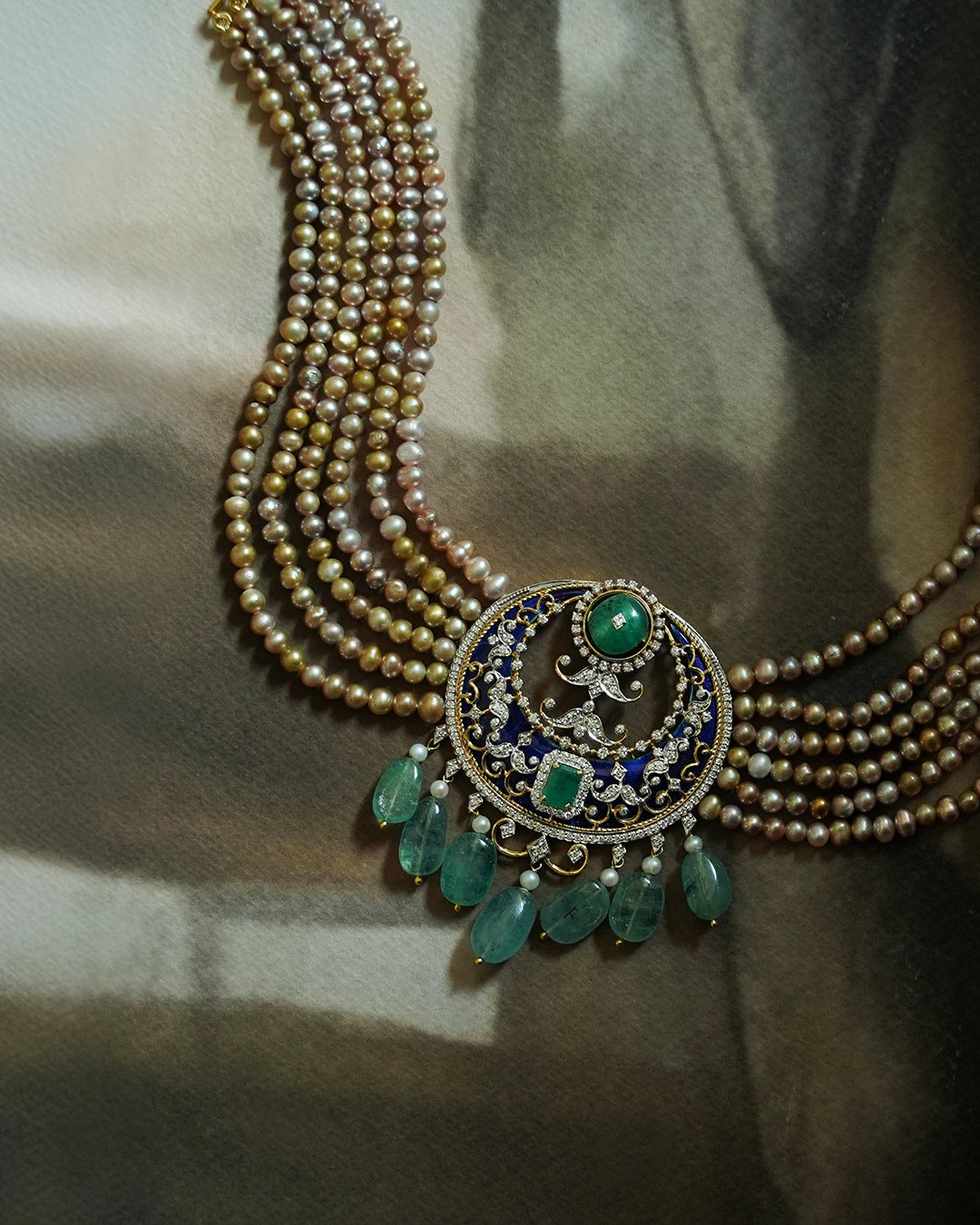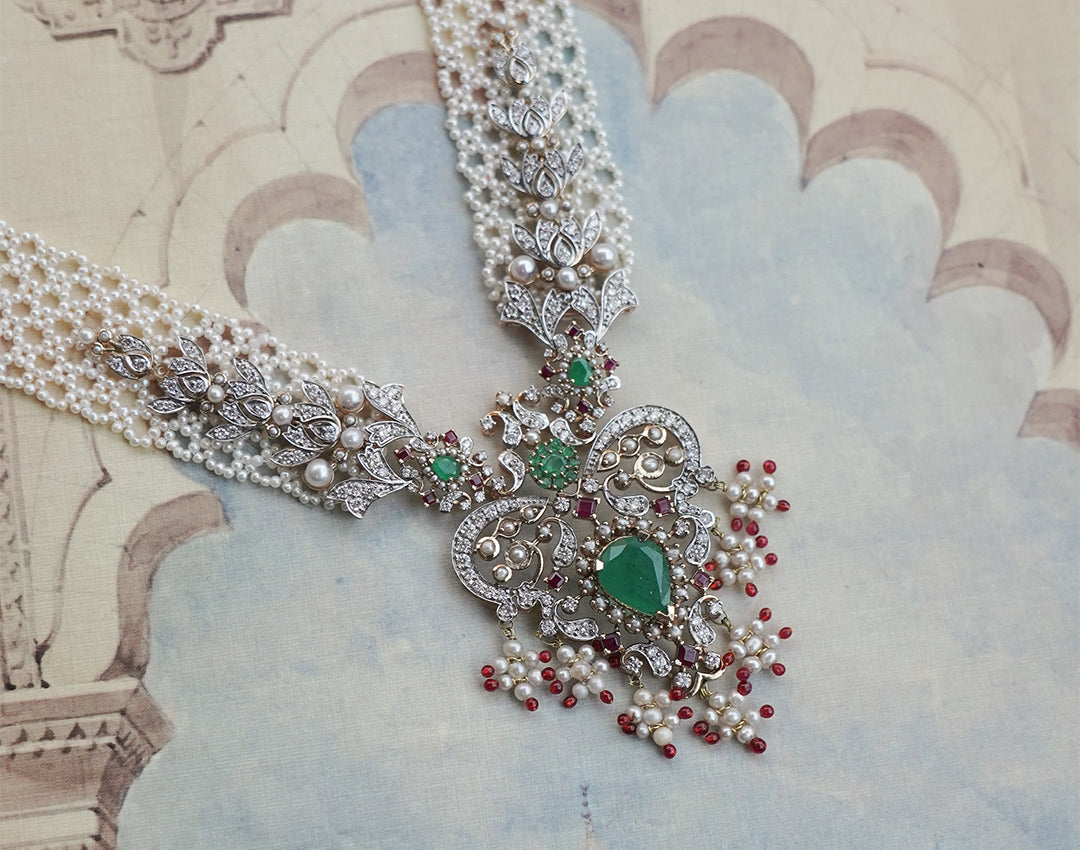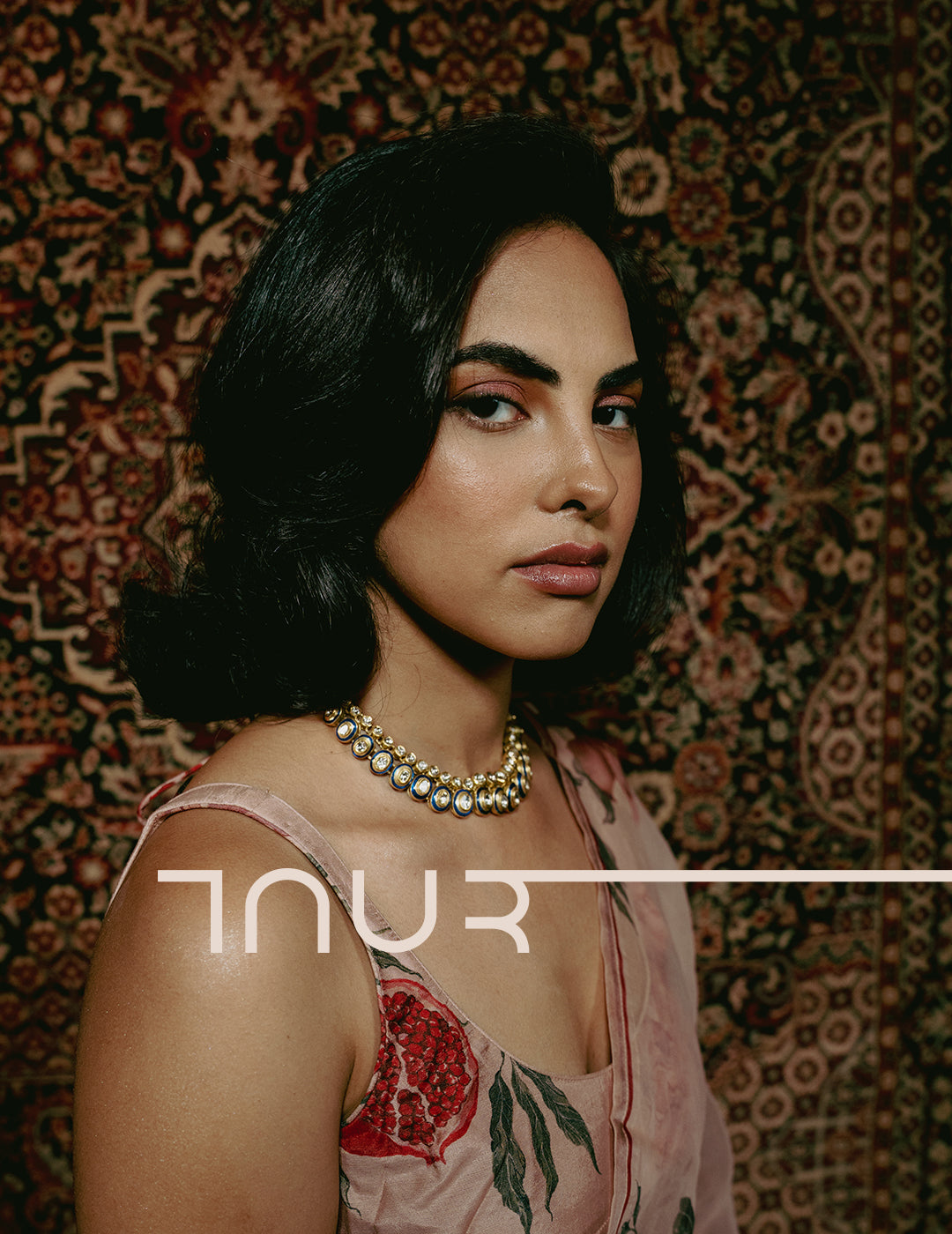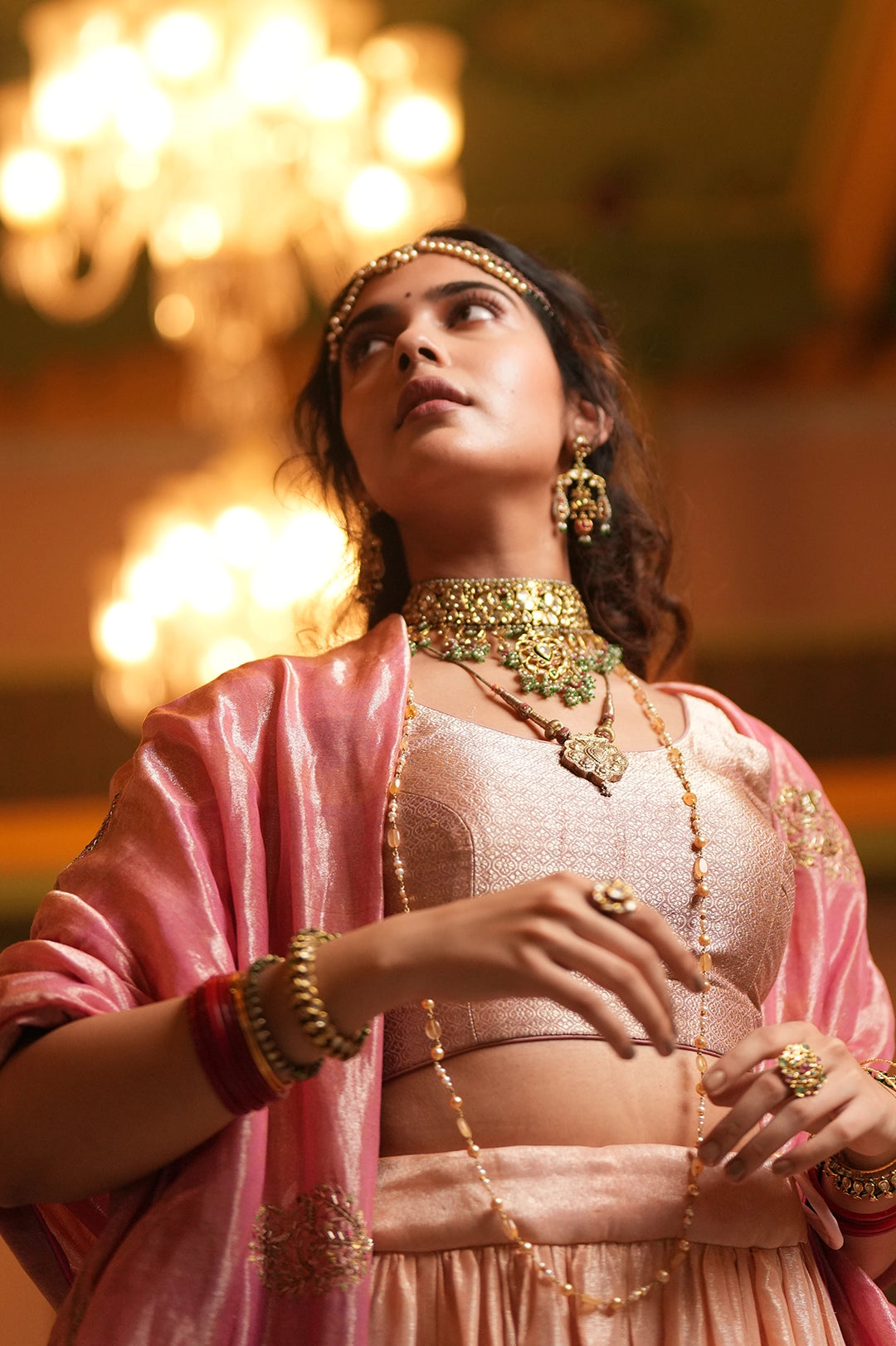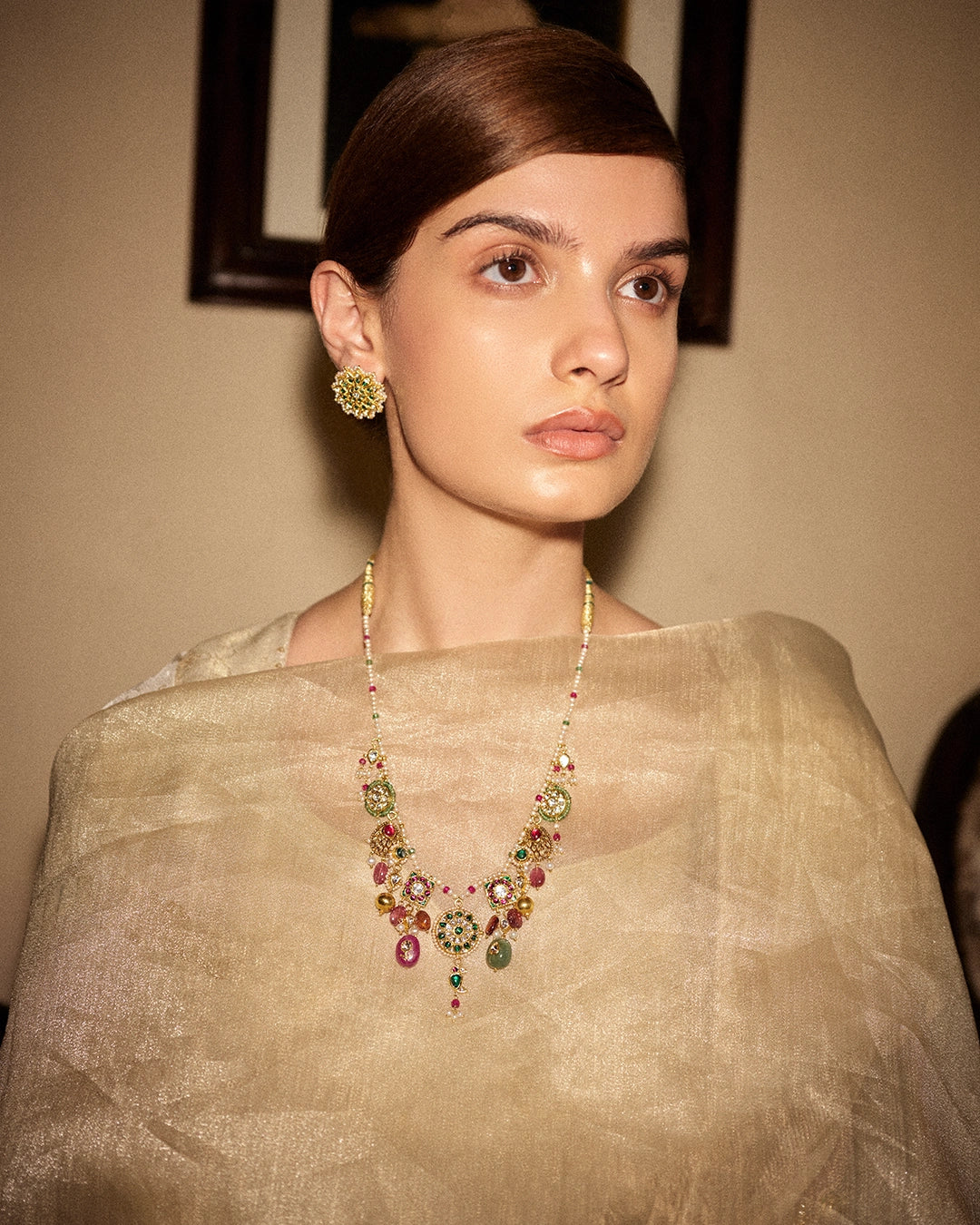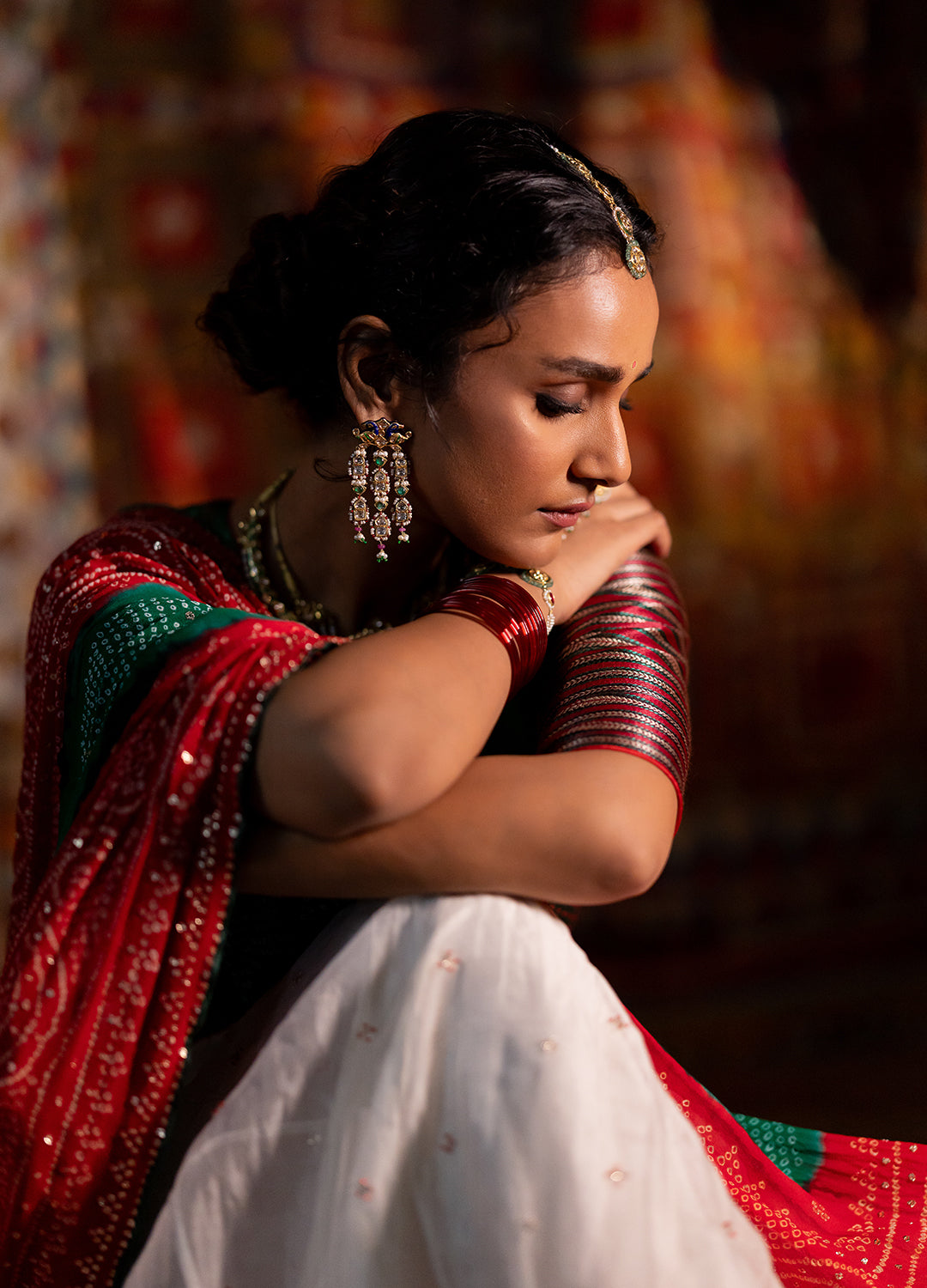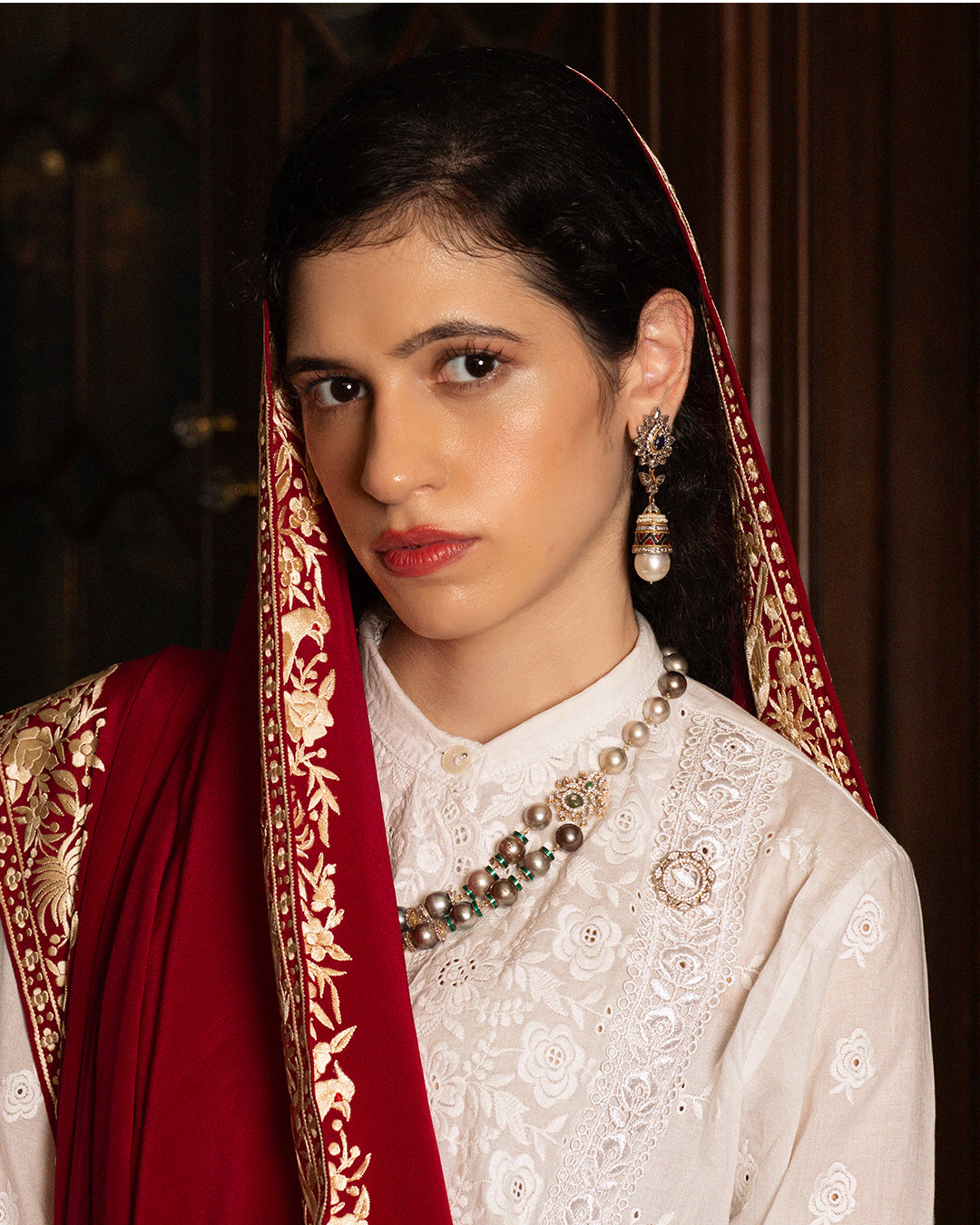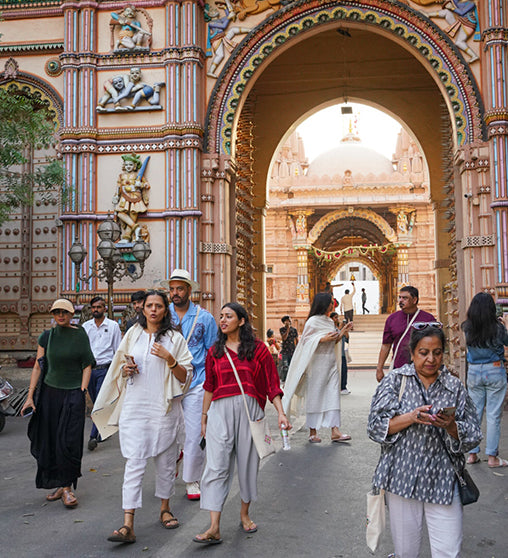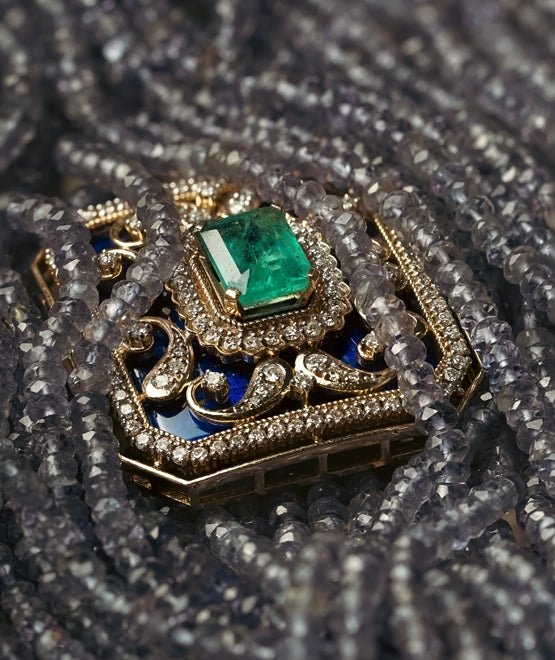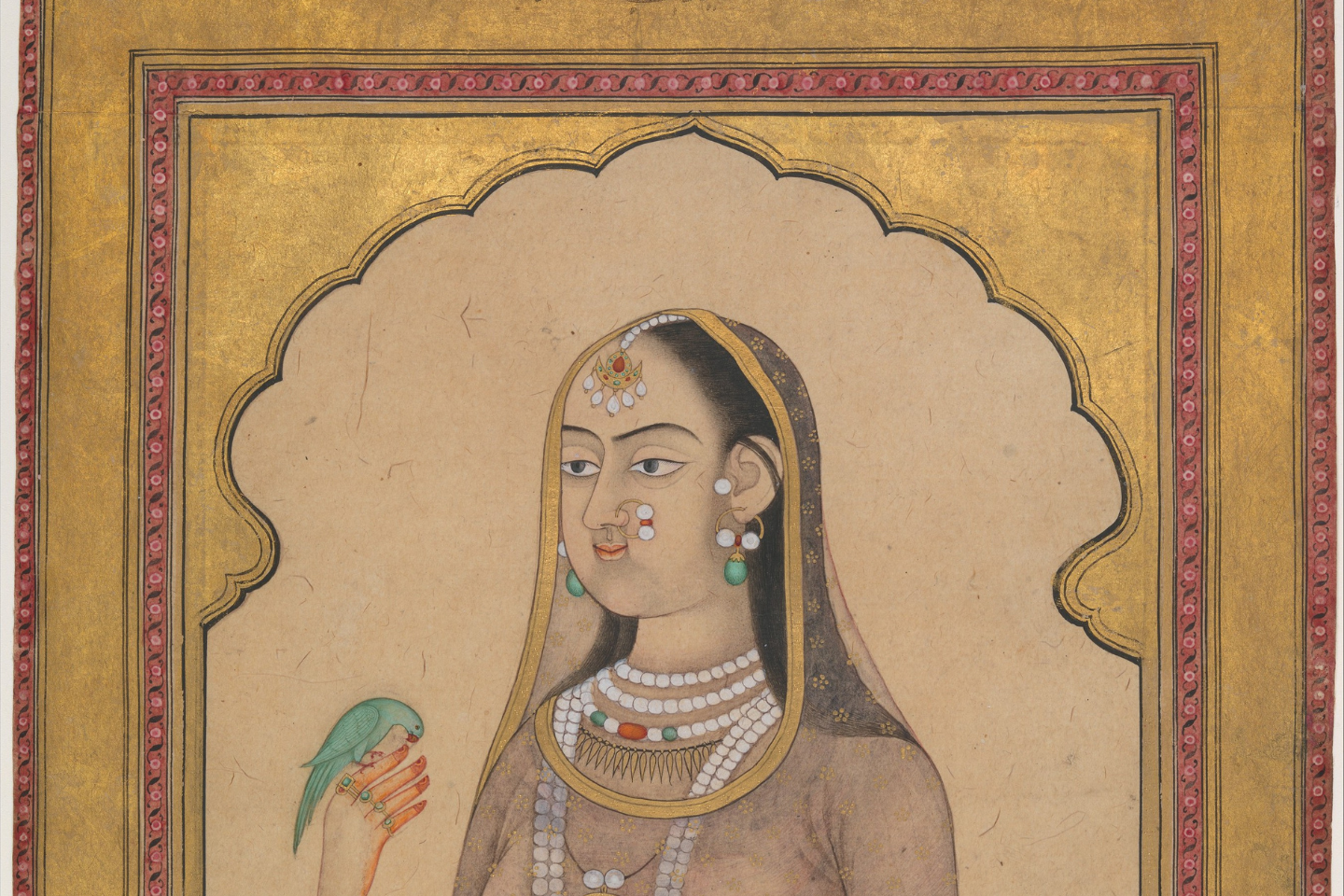When it comes to Indian jewelry, there is hardly any piece that does not have some sort of symbolism associated with it or a spiritual or cultural ethos as its inspiration. Right from the mang tikka, earrings, and necklace to the bangles, waistband, and toe ring—the creation of every ornament belonging to Indian jewelry has some sort of reasoning behind it, along with the material used to craft it.
You must have noticed that jewelry worn on the upper body is generally made of gold, whereas jewelry worn on the lower body is made of silver. According to the principles, gold interacts well with the energy of the body and the aura, whereas silver interacts well with the energy of the Earth. As a result, gold is employed for the other upper body ornaments, such as necklaces, while silver is used as anklets or toe rings.

The large fan-shaped pendant at the center of this necklace is decorated with flowers and scrolling motifs in gold. It is bordered by twelve finely filigreed amulets on either side, with clusters of small gold beads hanging below each. Together, these components form a substantial yet delicate piece of jewelry that would have been worn by a wealthy patron.
Source and image courtesy: The Met Museum

This silver 'nupur' (anklet) has toe rings as attachments which are suspended from a plaque decorated with red and green glass. The 'nupur' is decorated with beaded borders , two rows of pierced circles and a band of leaf motifs. There is a row of small balls which are suspended from the outer rim which will jingle. The anklet is opened with a pin.
Source and image courtesy: Victoria and Albert Museum
A Potential Protector of the Heart
One of the first forms of jewelry worn by humans may have been necklaces. Like any other adornment, a necklace can be a means of artistic expression for some people. Then there are those that incorporate it into their culture and custom.

Necklace comprised of blue and blue-green glazed composition cylinder beads and white glazed composition disk beads. Made in Egypt. Restrung in modern times.
Source and image courtesy: Victoria and Albert Museum
Since the early era of India's maharajas, necklaces have been a prominent element of Indian jewelry and a symbol of royalty. Indian necklaces come in a variety of styles, such as the smaller gold choker necklace, the lengthier pearl Rani Haar necklace, or the seven-layered Satlada necklace. Both men and women have worn ornate ornamental collars, pendants, strings of beads, and necklaces for social and aesthetic reasons since antiquity.

This South Indian marriage necklace is made of sheet gold pendants formed by hammering against a metal die, and adding minute motifs formed from gold wires or, again, by hammering against depressions cast into a metal block. The construction is therefore quite complex, but the finished work is extremely light.
Source and image courtesy: Victoria and Albert Museum
 This seven-stranded necklace, or satlari, was made in the city of Hyderabad in the Deccan region of India. Each strand holds a central pendant composed of a pearl drop surrounded by red, green, and colorless stones and enamel. In the early nineteenth century, this type of necklace was adapted by the French jewelry company Cartier, which began producing satlaris for wealthy Indian patrons.
This seven-stranded necklace, or satlari, was made in the city of Hyderabad in the Deccan region of India. Each strand holds a central pendant composed of a pearl drop surrounded by red, green, and colorless stones and enamel. In the early nineteenth century, this type of necklace was adapted by the French jewelry company Cartier, which began producing satlaris for wealthy Indian patrons.
Source and image courtesy: The Met Museum
Apart from the obvious aesthetic reasons, necklaces, like every other piece of Indian jewelry, have cultural reasons for being adorned the way they are. A deeper examination of this intricate relationship can help us unravel the layered significance. Worn in proximity to the heart, necklaces are thought to possess eternal powers, helping direct emotions and build love by regulating heart rate and blood pressure. Ancient Indians thought that pearls with no flaws averted bad luck, making them the favorites of kings and queens.

Maharani Sita Devi helping her husband, Maharaja Pratap Singh Gaekwad of Baroda, adjust the iconic Baroda pearl necklace that was commissioned by his grandfather, Maharaja Pratap Singh Gaekwad
Image courtesy: Pinterest

Maharani Yagoda Devi wearing the Patiala ruby choker that was commissioned by her husband, Maharaja Bhupinder Singh to Cartier
Image courtesy: The Adventurine
Neck jewelry is not only considered to enhance one's beauty and give it a more opulent appearance but is also considered to bring luck and serve as a deterrent to the negative effects of evil eyes when worn with precious gemstones. The Navaratna configuration, a set of nine precious gemstones that collectively represent the nine gods of the Hindu universe, serves as an example of this spiritual power attributed to necklaces. It is a symbol of wealth and status as well as various purported talismanic benefits to health and welfare.

The choker consists of nine gold plaques at the front, each set with nine precious stones, and twelve gold plaques with no gemstones at the back. A pendant is attached to the central one of the nine gem-set plaques at the front. It is also set with nine precious stones and has nine pendant stones attached individually to the bottom of it.
Source and image courtesy: Victoria and Albert Museum
Mangal Sutra—the Necklace of Good Energies
Among the different types of necklaces that an Indian woman wears, there is one that holds the highest importance—the Mangal sutra. Wearing a mangal sutra is a tradition that has religious and emotional connotations along with supposed spiritual and biological ones. The two golden cups in the pendant of a Mangal sutra are hollow from one side and elevated from the other. The hollow side is worn facing the body so that good energies are drawn to the empty spaces in the cups. This is said to promote the well-being of the body and mind.

Image courtesy: Flickr
Additionally, it is thought that consistently wearing the mangal sutra enhances the blood circulation of the body. The black beads of the mangal sutra are thought to repel bad energy, while the golden pendant is thought to amplify good feelings and make married life happier for the couple.
Feature image courtesy: The Met Museum
